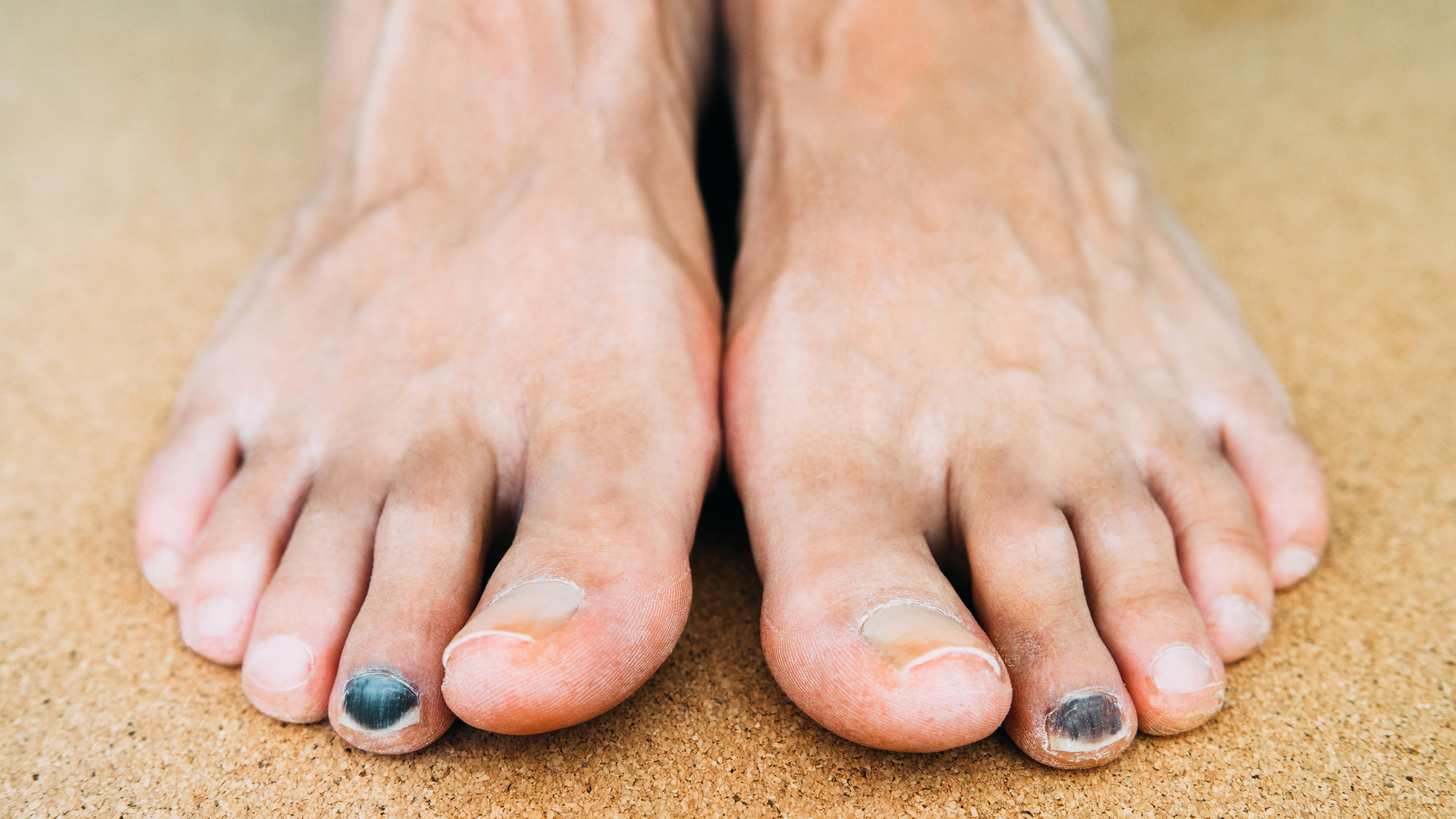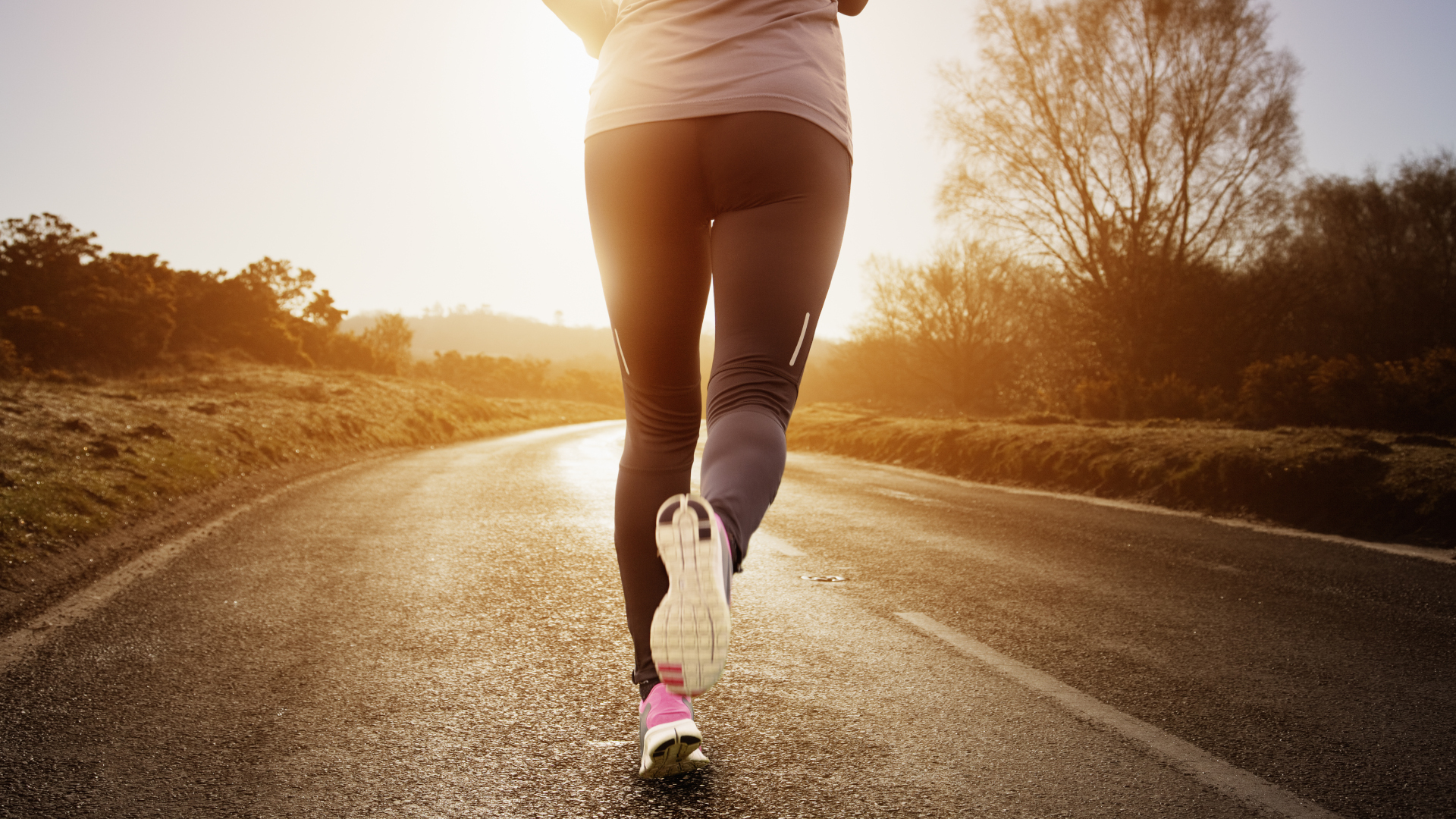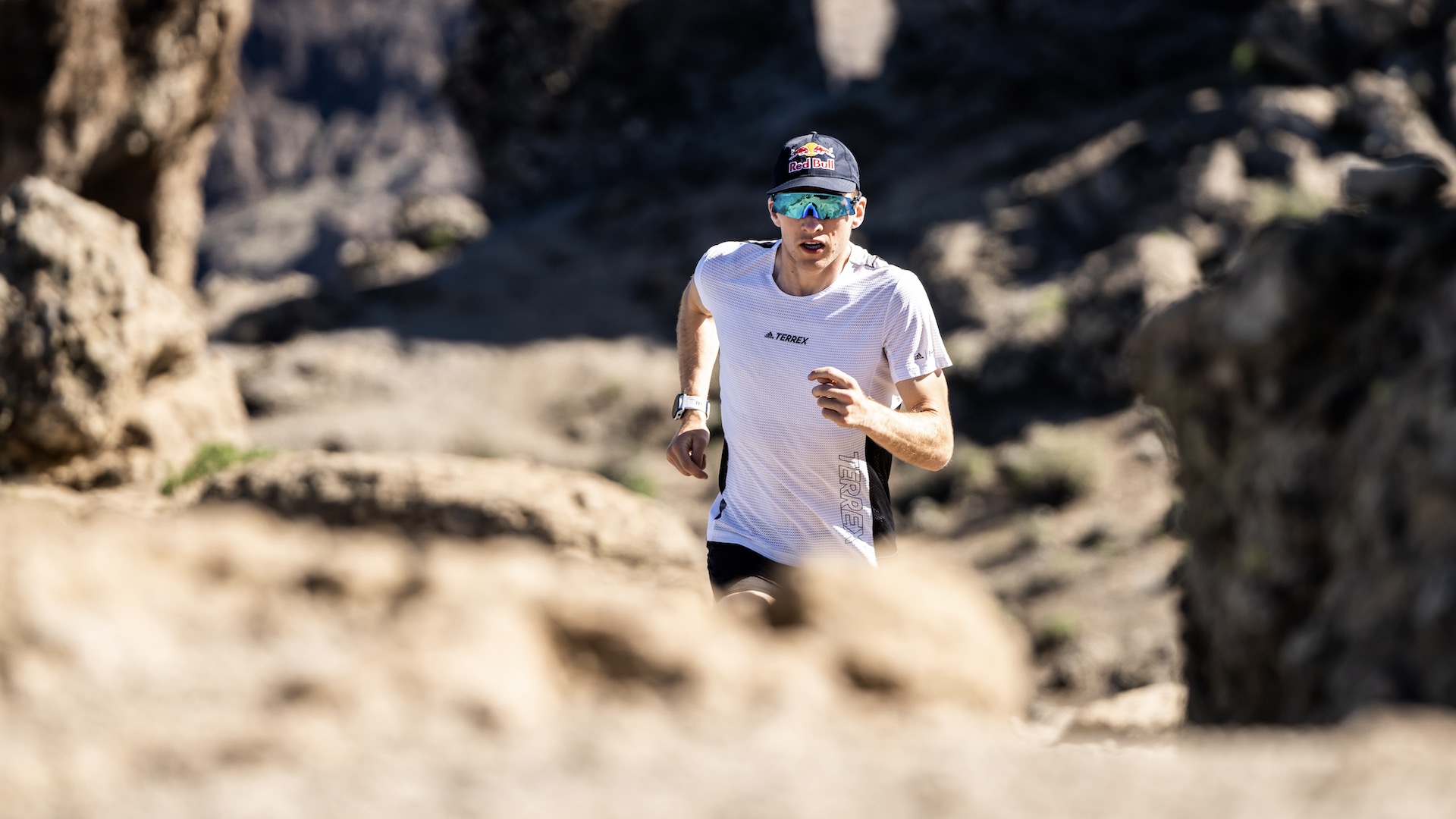Can you run without toenails?
Can you run without toenails, or do you have to take a break when you lose a toenail? We speak to an expert to find out if this spells disaster or do-it-anyway

It’s not a secret that runners have nasty feet. And if it was unknown to you until right this moment, just so you know, runners have nasty feet. Well, long distance runners anyway, and while we’re certain that there are some exceptions to this rule (please don’t send pictures as evidence), it’s no surprise, really. Logging hundreds of miles every month is bound to leave you with callouses, blisters, the odd bout of foot fungus, bruised toenails and even missing a few toenails from time to time, even if you’re wearing the best trail running shoes on the planet. You’ve got pressure, friction, moisture and distance to contend with, after all, and there’s only so much a pair of liner socks can really do.
So is it normal to lose toenails from running? Why does it happen, anyway? And can you run without toenails, or do you have to take a break from training? We spoke to podiatrist Manjeet Sagoo who is based in Gold Coast, Queensland to get to the bottom of these slightly stomach-turning questions. And just in case you’re worried, yes there are loads of disgusting stock images of toenails falling off, and no we haven’t used any in this article.

Is it normal to lose toenails from running?
Anecdotally, it definitely seems as though toenail loss is common among long-distance runners, and that’s just from an informal poll of Advnture’s staff, never mind ultra runners or those who take on events like the New York Marathon. However, we decided to do our due diligence and ask an expert, and Sagoo confirmed our suspicions with some helpful explanations as to why.
“This is very common with runners, for a few reasons. If running, the toe box of the shoe might not be deep enough, which causes pressure. Other times it can also be if the shoe is too loose and the foot moves around in the toe box.”
So basically, if your running shoe is too tight, too loose, or has the wrong shaped toe box for your foot, you could be minus a toenail or two after a few ultra marathons, but that seems easily solvable – just get the correct size shoes, right? Well, sure, as long as you don’t run downhill ever.
“Often though, the trauma happens when running downhill and the pressure/force goes forward and toes push against the shoe,” Sagoo explains.
OK, so no trail running? Not likely, you’re probably thinking, if you love the softer ground and deeper immersion into nature you get from your fast-paced adventures in nature. Even if you’re a roadrunner, the loss of a toenail might just happen as the result of repetitive trauma from time to time, and you can reduce the risks by getting different shoes, but you might not be able to totally prevent it and do the kind of running you want to do. Sorry.
All the latest inspiration, tips and guides to help you plan your next Advnture!

Can you run without toenails?
So, you ran an ultra marathon last month. Your toenail turned purple the next day, black a few days later, then after a few weeks it became loose and fell off. Gross. Do you have to stop running for a while now? After all, toenails certainly seem like they serve a protective function, and an article in BBC’s Science Focus magazine confirms this, as well as providing some other possible explanations for why we have these little keratin shields at the end of our digits – to help our primate ancestors remove ticks, for example.
Anyway, toenails have a purpose, even if it’s partially evolutionary, but Sagoo says toenail loss isn’t all bad news when it comes to running, even if you can’t in good conscious get a professional pedicure for four or six or even 18 months in some cases while you’re waiting for it to grow back.
“People can keep running,” says Sagoo. “Often the nail will come off with no wound beneath it, so people just get on with it as the area can toughen up.”
In fact, American endurance runner Marshall Ullrich has famously run over 130 ultramarathons, averaging over 125 miles each, competed in 17 expedition-length adventure races, and climbed the Seven Summits, mostly without any toenails.
That's because he had them surgically removed to deal with chronic toenail issues, according to ESPN. Now this might be kind of an extreme response to toenail problems caused by running, and it’s certainly not common or even recommended, but at least anecdotally it supports Sagoo’s advice: you can run without toenails, and do quite well at it, as it turns out.

Before you pull on your trail running socks over your festering, bleeding toes and head out for a quick 20-miler though, there is one word of warning from Sagoo:
“If it is all blood and pus and needing a dressing, it is best they rest. But I suppose the answer often lies with the runner – they don’t like to stop running.”
To sum up, yes you can run without toenails, but if your feet are in need of a dressing, try to take a few days off to let them heal a bit before you get any more miles in. Oh, and trim your toenails too, since this might be why you’re butting up against the toe box of your shoe. If your toenail problems are ongoing, you should see a podiatrist like Sagoo, and consider getting a gait analysis too to see if it’s your running form that’s causing the issue.
- Best trail running shoes: find your perfect shoes for off-road fun and comfort
Julia Clarke is a staff writer for Advnture.com and the author of the book Restorative Yoga for Beginners. She loves to explore mountains on foot, bike, skis and belay and then recover on the the yoga mat. Julia graduated with a degree in journalism in 2004 and spent eight years working as a radio presenter in Kansas City, Vermont, Boston and New York City before discovering the joys of the Rocky Mountains. She then detoured west to Colorado and enjoyed 11 years teaching yoga in Vail before returning to her hometown of Glasgow, Scotland in 2020 to focus on family and writing.

